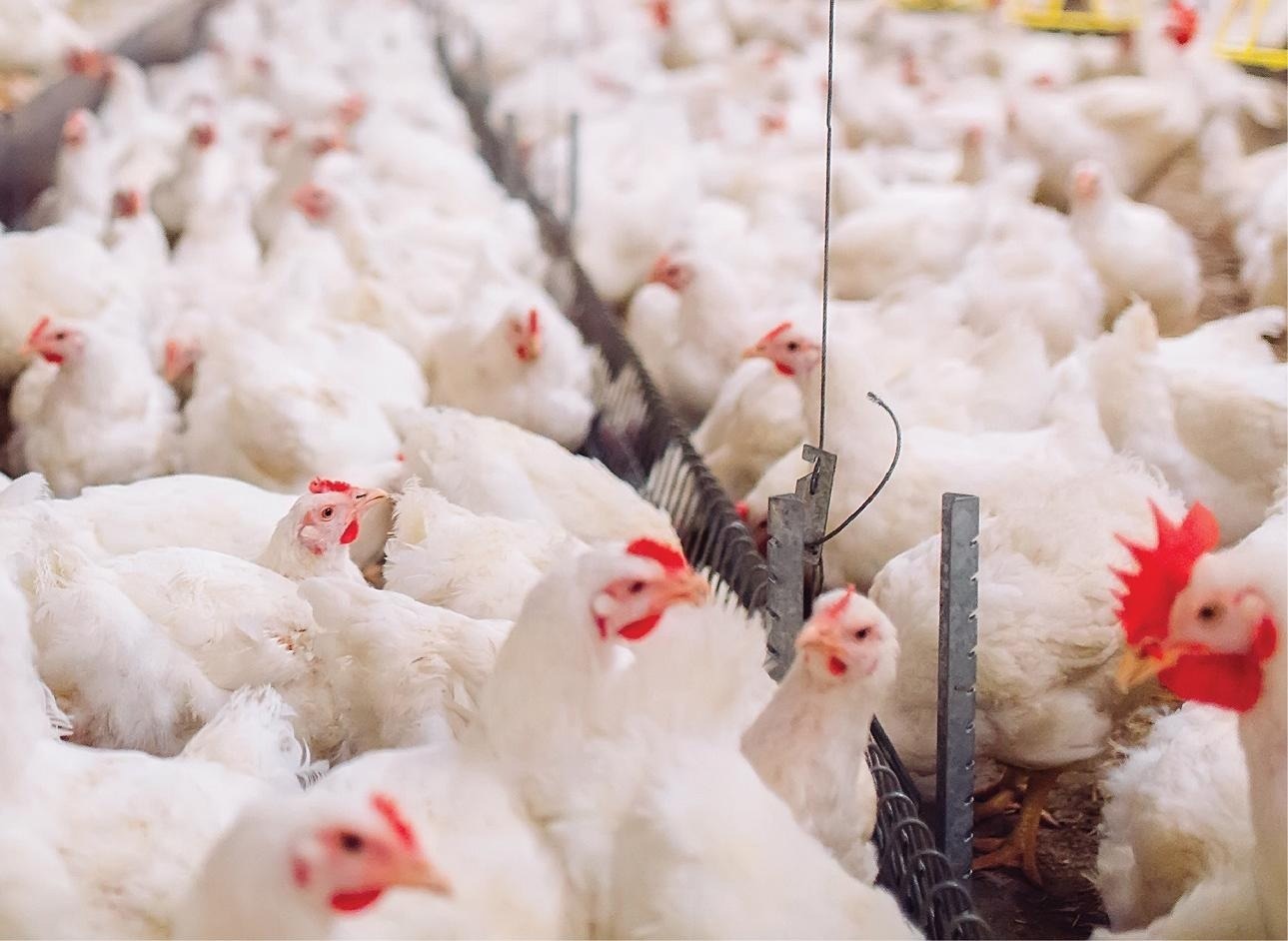Reviewed by Danielle Ellis, B.Sc.Aug 21 2023
According to a recent study, utilizing big data and machine learning to monitor antimicrobial resistance (AMR) in cattle production techniques could help guide interventions and provide defenses against bacteria that are developing antibiotic resistance.

Image Credit: University of Nottingham
Researchers at the University of Nottingham examined the microbiomes of chickens, corpses, and settings over a period of two and a half years. The resultant network of relationships between animals, habitats, microbial populations, and antibiotic resistance offers several options for enhancing antibiotic resistance surveillance in livestock production.
In ten large-scale chicken farms and four connected abattoirs from three provinces in China, one of the biggest consumers of antibiotics, the study, which was led by Dr Tania Dottorini, Professor of Bioinformatics, employed a data-mining technique based on machine learning. Antimicrobial resistant (AMR) diseases are on the rise, and this is correlated with the use of antibiotics in livestock production on farms to both prevent and cure diseases.
The study, which was published in Nature Food, discovered many antimicrobial resistant genes (ARGs) that were shared by chickens and the farms where they resided and are potentially highly transmissible.
The findings also reveal that a core fraction of the chicken gut microbiome, which includes clinically relevant bacteria and antibiotic resistance genes, coincides with E. coli AMR profiles that colonize the gut. Notably, this core, which comprises clinically high transmissible ARGs shared by chickens and surroundings, is altered by temperature and humidity and corresponds with antimicrobial use.
This is an exciting moment. We are ready to invest in new AI-powered AMR integrated surveillance approaches to identify the drivers and the mechanisms underlying the insurgence and spread of AMR.”
Dr Tania Dottorini, Professor, Bioinformatics, University of Nottingham
According to the World Health Organization, antimicrobial resistance (AMR) is one of the top ten worldwide public health challenges confronting humanity. AMR jeopardizes the efficient prevention and treatment of a growing number of diseases caused by bacteria, parasites, viruses, and fungi.
Every year, around 600 million cases of foodborne illness occur worldwide, resulting in roughly 420,000 fatalities. Diarrhoeagenic E. coli causes over 300 million infections and 200,000 deaths worldwide.
In several countries, chickens are kept in sheds that lack an adequate climate control system, resulting in significant temperature and humidity changes. The findings show that the key elements of the gut microbial population and resistome, which have been linked to resistance in E. coli, are also linked to variations in temperature and humidity in chicken housing.
The relationships between environmental variables and the species and genes associated with AMR present opportunities for the development of novel AMR monitoring solutions, particularly in low- and middle-income countries where these variables are uncontrollable and pose a risk to the animals exposed to changes in them.
Dottorini added, “The spread of antimicrobial resistant microorganisms and AMR at the human-animal-environment level and food interface is a major global concern. The transmission of AMR can take place through different routes and pathways, and the food chain, either indirectly via food consumption or directly through contaminated food-animal handling and manure or fecal contamination is a relevant one.”
She further noted, “We have demonstrated how methodologies can be developed that can associate a wide array of microbial species and genes with observable AMR, and further assessed how those are associated with the environmental variables of temperature and humidity. Next, we must consider all relevant and interconnected AMR datasets in a 360° approach, which will deepen our understanding and control of AMR spread.”
“This is an exciting moment. We are ready to invest in new AI-powered AMR integrated surveillance approaches to identify the drivers and the mechanisms underlying the insurgence and spread of AMR, and of new genetic variants of resistant pathogens across animals, environment, humans, and food. This will be ground-breaking,” Dottorini concluded.
Source:
Journal reference:
Baker, M., et al. (2023). Machine learning and metagenomics reveal shared antimicrobial resistance profiles across multiple chicken farms and abattoirs in China. Nature Food. doi.org/10.1038/s43016-023-00814-w